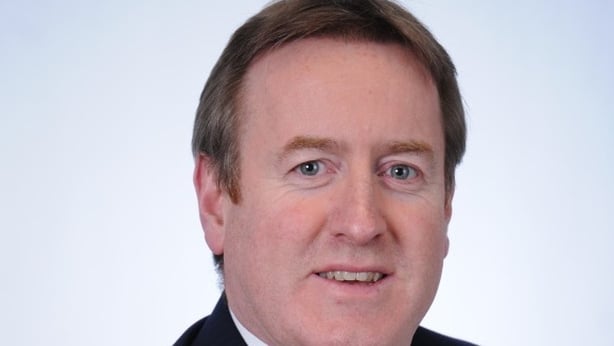Bank of Ireland has told an Oireachtas committee that since 2016 around 800 of its customers experiencing financial difficulty have had an element of their outstanding mortgage debt written down following the sale of the property held as security.
The bank told the Oireachtas Committee on Finance, Public Expenditure and Reform that in just one case did the amount of mortgage debt written off exceed 90% of the original loan.
In that case, the debt write-off was less than €35,000, it said in a letter sent to the committee.
It added that around 300 customers had their outstanding mortgage debt reduced since 2016 as part of a bankruptcy or personal insolvency process.
Overall, the bank said that since 2016 it has supported 9,900 mortgage customers through the provision of a forbearance arrangement, with the primary aim of making customers' mortgages sustainable.
The bank was responding to a request from the committee for further information about how it handles debt write down situations with customers.
It follows AIB’s recent appearance before the committee to answer questions about the topic.
At that hearing AIB told TDs and Senators that more than 1,900 customers have had their debts written down by over 90% since 2015, with €3.5 billion in total debt written off between that year and 2022.
It later told the committee in a letter that the total value of the 1,900 borrower debts that were written down by more than 90% was €533.8m.
It also said that 83 of the customers had more than €1m in debt written off.
In his letter to the committee, seen by RTÉ News, Bank of Ireland’s Head of Customer Loan Solutions, Martin McKenna, said that the bank has a range of forbearance measures that it considers when customers are experiencing difficulties in repaying debt.
But he added that debt write down is not offered as one of those solutions.
Mr McKenna said when a sustainable solution is not possible, the bank will seek to sell the asset or assets linked to the debt.
The executive said if the sale does not clear the debt, then it is only at this point that a write down may be considered and it engages with the customers on a case-by-case basis.
"Any consideration of writing down debt at this stage is subject to analysis, supported by detailed information including full financial disclosure, an updated statement of affairs, confirmation of the disposal of assets including any international assets, and consideration of any associated debt within the Bank and the status of these facilities," he said.

Meanwhile, Permanent TSB's chief executive has told the committee that since late 2016 the bank has processed write-offs for around 325 customers with secured loans where the amount written off was in excess of 90% of the original loan balance.
This figure, Eamonn Crowley said, does not include customer loans in a bankruptcy or personal insolvency arrangement process.
The CEO added that since that year PTSB has granted alternative repayment arrangements to around 11,000 secured customer loan accounts.
He said the bank recognises every case is unique and needs to be considered on its own merits and it has a comprehensive range of supports available to customers facing financial challenges.
Mr Crowley said that where the Bank is unable to agree an alternative repayment arrangement with the customer and their loan is non-performing, there are a number of options available including voluntary sale, voluntary surrender, 'mortgage to rent’ or negative equity trade down.
He added that legal action for recovery of debt is generally only considered in circumstances where the customer has failed to co-operate or engage with the bank, their loan is deemed non-performing and all collections options are exhausted.
"Write-off typically occurs as a last resort when the collections or legal processes have been exhausted and the debt is deemed uncollectable," Mr Crowley said.
"Write-offs in respect of the Bank’s mortgage portfolio are generally triggered on disposal of the secured property or on foot of a debt settlement agreement with the customer."
"The write-off of customer debt follows a robust controlled process, with write-offs over a certain threshold requiring approval by the bank’s Credit Committee."







